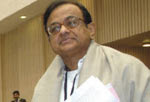IIPM - Admission Procedure
In a 2005 column for the British daily, The Guardian, Peter Hyman wrote that an election is all about putting your most mouth-watering political wares in the shop window, and discarding those half-baked ideas that will crumble under election pressure. And Hymen knows more than a thing or two about making marketable campaigns and ensuring electoral wins. After all, the man has masterminded two consecutive campaigns for Britain’s Labour Party in 1997 and 2001 and ensured the second victory, against seemingly indomitable anti-incumbency odds.
Throughout their first term (1997-2001), Labour remained committed to a marketing orientation and even brought out an annual report on the delivery of its 1997 election promises. Even party spending on advertising multiplied. But while Tony Blair succeeded in areas like constitutional reforms, he failed to deliver on improving standards of public services – the core of the 1997 political product that Labour promised. In came the expertise of Peter Hyman, who along with key Labour strategists brought in the right strategy to display only the most saleable dresses on the Labour window. After collecting dollops of market intelligence, including a survey done by their ad agency TBWA London, Labour devised a product similar to their 1997 offering with greater emphasis on the deliverables. Even particular product (oops… poll) deliverables were tailored such that it would be easier to measure deliverability. So, instead of saying ‘no queues for healthcare’, Labour promised ‘20,000 extra nurses and 10,000 extra doctors for the NHS’ and so on.
“Labour party managers targeted those supporters whom they considered weak as they had voted Labour first time in the 1997 elections… they convinced these weak voters that they have done wonders to the economy. Once this was addressed, Labour Party won the day,” explains David Sanders, University of Essex and an expert on election campaigning in Britain.
Moreover, if ‘Operation Victory’ was their slogan in 1997, in 2001, Labour focused on ‘Operation Turnout’.
They focused on targeted direct mailers and postal votes, in a bid to expand the overall voter base, fearing that the traditional Labour vote bank would be difficult to motivate. Labour also focused on its competition (the Conservatives) and through posters brought out the negatives of a Conservative win. Clever party strategists resorted to humour rather than a frontal attack on the opposition to drive home the message. The infamous ‘Wiggy’ poster – a smart depiction of William Hague (then leader of Conservative party), with Thatcher’s hair - warning ‘Get out and vote or they get in’ made voters laugh and talk about the campaign with friends and colleagues. Labour had effectively scored a political point, while telling voters that they needed more time to deliver.
The 3600 approach worked and Tony Blair won another landslide back into 10, Downing Street!
For more articles, Click on IIPM Article.
Source : IIPM Editorial, 2008
An Initiative of IIPM, Malay Chaudhuri and Arindam chaudhuri (Renowned Management Guru and Economist).
For More IIPM Info, Visit below mentioned IIPM articles.
IIPM Programme :- SUPERIOR COURSE CONTENTS
Now IIPM's World-Class Education... for everybody!!
IIPM INTERNATIONAL - NEW DELHI, GURGAON & NOIDA
IIPM, GURGAON
IIPM : EXECUTIVE EDUCATION
IIPM’s 36th Glorious Year of Academic Excellence
4Ps Power Brand Awards 2007
When IIPM comes to education, never compromise
Why Study Abroad When IIPM Gives You 3 global Advantages!
IIPM Ranked No. 1 B-School In Global Exposre - Zee...

 name one Indian boxer you can remember… Well…come on…no one? 99 out of 100 people in India would have trouble recalling the name of a past or current Indian boxing champion. That says far more about the sorry lack of genuine world champions (and Olympic medalists) that we’ve produced in boxing than it does about our general knowledge. Now with the Beijing Olympics just round the corner, Indians don’t expect our boxers to shake us out of our chronic apathy and disinterest with the sport. But one man is hoping to change that. Akhil Kumar, this 27 year-old boxer from Haryana is even making skeptics sit up and take notice.
name one Indian boxer you can remember… Well…come on…no one? 99 out of 100 people in India would have trouble recalling the name of a past or current Indian boxing champion. That says far more about the sorry lack of genuine world champions (and Olympic medalists) that we’ve produced in boxing than it does about our general knowledge. Now with the Beijing Olympics just round the corner, Indians don’t expect our boxers to shake us out of our chronic apathy and disinterest with the sport. But one man is hoping to change that. Akhil Kumar, this 27 year-old boxer from Haryana is even making skeptics sit up and take notice.
